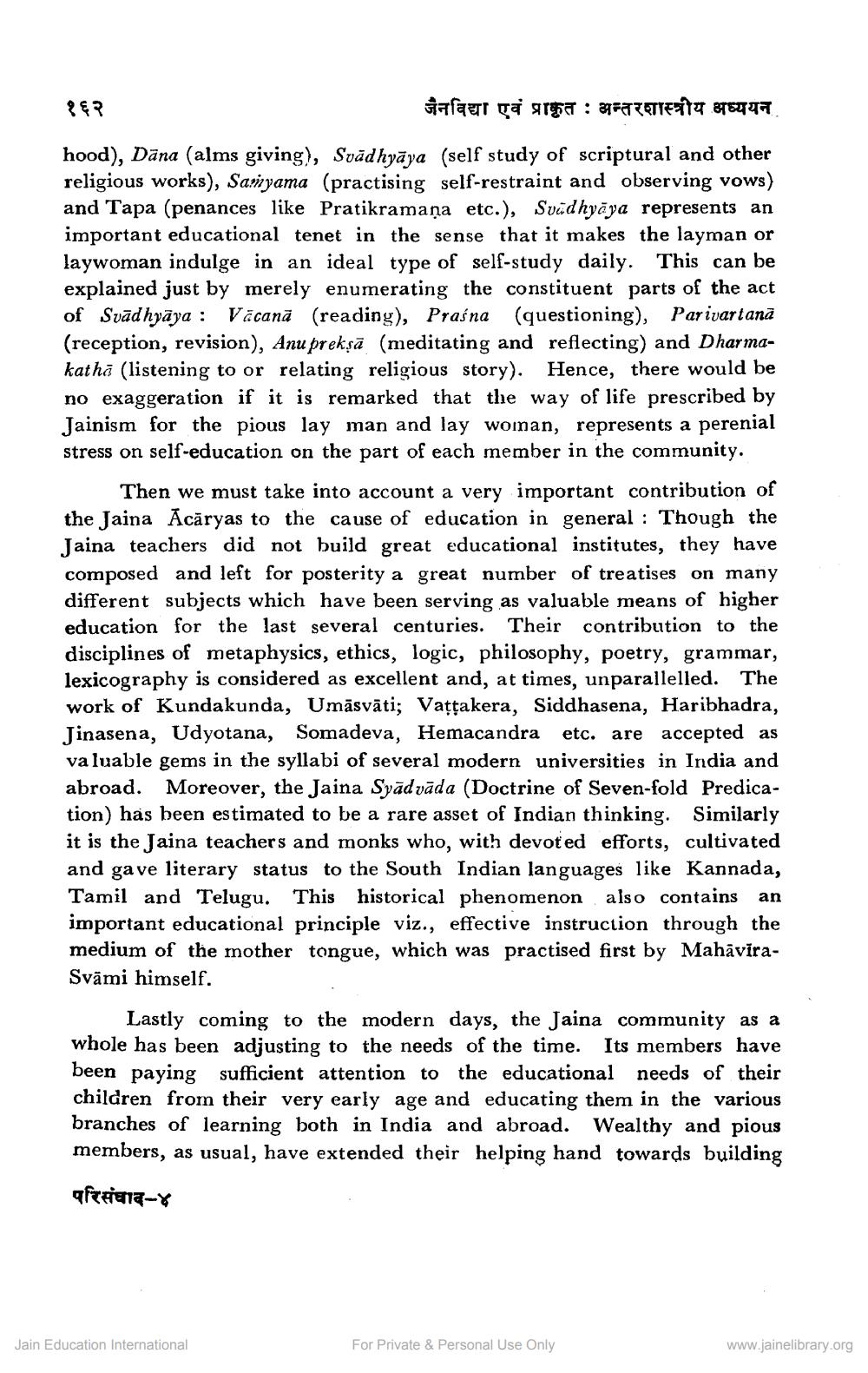________________
१६२
जनविद्या एवं प्राकृत : अन्तरशास्त्रीय अध्ययन
hood), Dāna (alms giving), Svādhyāya (self study of scriptural and other religious works), Samyama (practising self-restraint and observing vows) and Tapa (penances like Pratikramaņa etc.), Svüdhyāya represents an important educational tenet in the sense that it makes the layman or laywoman indulge in an ideal type of self-study daily. This can be explained just by merely enumerating the constituent parts of the act of Svādhyāya : Vācană (reading), Praśna (questioning), Parivartanā (reception, revision), Anu prekṣā (meditating and reflecting) and Dharmakatha (listening to or relating religious story). Hence, there would be no exaggeration if it is remarked that the way of life prescribed by Jainism for the pious lay man and lay woman, represents a perenial stress on self-education on the part of each member in the community.
Then we must take into account a very important contribution of the Jaina Ācāryas to the cause of education in general : Though the Jaina teachers did not build great educational institutes, they have composed and left for posterity a great number of treatises on many different subjects which have been serving as valuable means of higher education for the last several centuries. Their contribution to the disciplines of metaphysics, ethics, logic, philosophy, poetry, grammar, lexicography is considered as excellent and, at times, unparallelled. The work of Kundakunda, Umāsvāti; Vațţakera, Siddhasena, Haribhadra, Jinasena, Udyotana, Somadeva, Hemacandra etc. are accepted as va luable gems in the syllabi of several modern universities in India and abroad. Moreover, the Jaina Syād vāda (Doctrine of Seven-fold Predication) has been estimated to be a rare asset of Indian thinking. Similarly it is the Jaina teachers and monks who, with devot ed efforts, cultivated and gave literary status to the South Indian languages like Kannada, Tamil and Telugu. This historical phenomenon also contains an important educational principle viz., effective instruction through the medium of the mother tongue, which was practised first by MahaviraSvāmi himself.
Lastly coming to the modern days, the Jaina community as a whole has been adjusting to the needs of the time. Its members have been paying sufficient attention to the educational needs of their children from their very early age and educating them in the various branches of learning both in India and abroad. Wealthy and pious members, as usual, have extended their helping hand towards building
परिसंघाद-४
Jain Education International
For Private & Personal Use Only
www.jainelibrary.org




